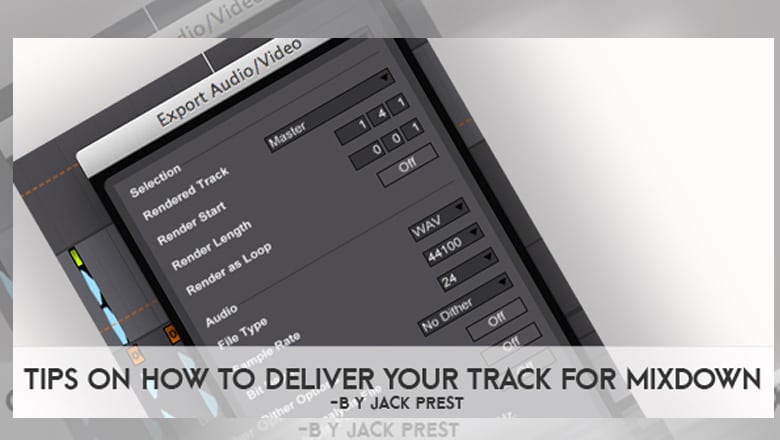Whenever I’m working on a mix for a new client a question that frequently gets asked is “What is the best way to deliver the files for mixdown?”. Although there are no hard and fast rules, (always make sure you touch base with your mix engineer as everyone has their own personal preferences) here are some tips, from questions that I get asked, that will help prepare your track for mixdown.
Can I just send you my session file?
I always request the audio stems. (Individual bounce files of each element of the mix) Even if I am working in the same DAW as the client this is always my preference. In my experience working with session files can become too problematic.
- There is a strong possibility of missing plugins/audio files
- In most cases it can be difficult to navigate someone else’s session.
I prefer to start a clean session every time. This way I know exactly what is going on and can use my workflow to get my maximum results.
What sample rate/ bit depth do you want?
Another big question I hear is in regards to sample rate and bit depth. My preference for this is to have the files delivered at the same sample rate and bit depth as your original project. This way there is as little conversion as possible. Any necessary conversion can be left up to the mastering engineer. Sample rate/ bit depth is definitely is something you should check with your mix engineer first, because everyone has a different opinion and personal preference.
How do I export stems?
When exporting your stems always make sure that you are exporting your stereo tracks as stereo files, and mono tracks as mono files. I know this may sound simple but this is the correct way to export stems and you mix engineer will love you for it. Additionally, also be careful of your export settings and be sure not to add any normalisation or dithering. If you are not sure how to do this, I recommend doing some research or googling about the export window of your DAW and you’ll find the answers you need.
Should I leave on my effects?
Possibly the most important question I get is “Do I leave my effects on or turn them off?”. Because I work predominantly on electronic music this is particularly important as the effects can be integral to the sound of a track.
My general rule for this is as follows:
- If the effect added is a part of the sound i.e. a filter sweep, phaser, sidechain or things just sound wrong without it, then leave it on.
- If the effect is not integral i.e. some subtle EQ or compression, then bypass it.
If you are using auxiliary sends for reverbs or delays etc. bounce each auxiliary to it’s own stem.
I request all vocal parts to be completely raw and effect free unless there is a vocal chop/ filter effect that is key to the track.
I will then request both a set of stems with full effects and a set of stems completely dry. I want both because this way I can start my mix as close to your original production as possible and then swap out stems if any of the effects are causing issues for the online mix. I also generally request midi stems of lead, pad and bass parts so they can be easily swapped out or layered if necessary.
BPM
Finally make sure you include the BPM and key of the track somewhere with your stems. This is a small thing but will help immensely and take the guesswork out on my side. (and will show your mix engineer you care.)
Blog by Jack Prest, Producer/ Engineer at Studios 301
For enquiries or bookings with Jack please contact:
Studio Manager Abbey Smith
Email: abbey@studios301.com
Phone: 02 9698 5888
More Jack Prest blog posts
https://studios301.com/news/its-a-producer-focus/
https://studios301.com/blog/jack-prest-analog-v-digital-1/
https://studios301.com/blog/jack-prest-analog-v-digital-2/

Leave a Reply